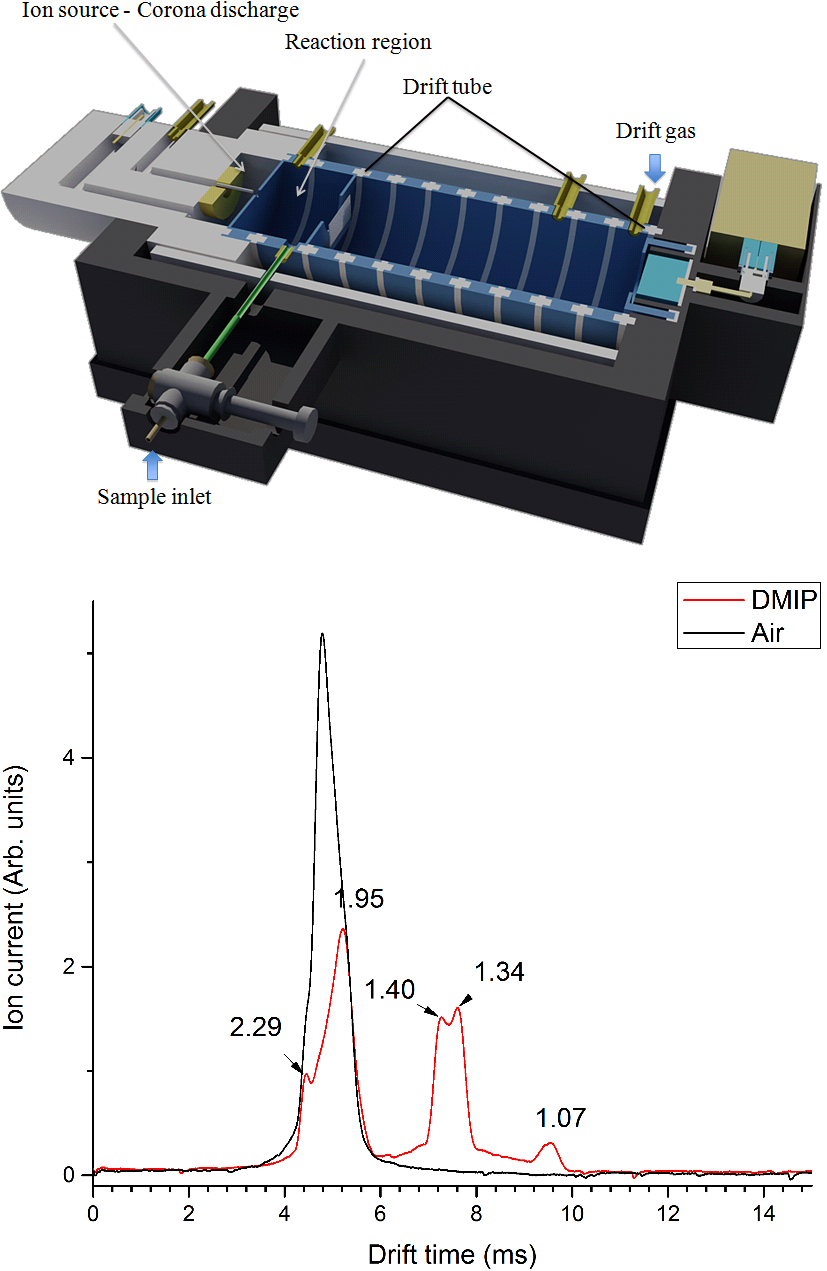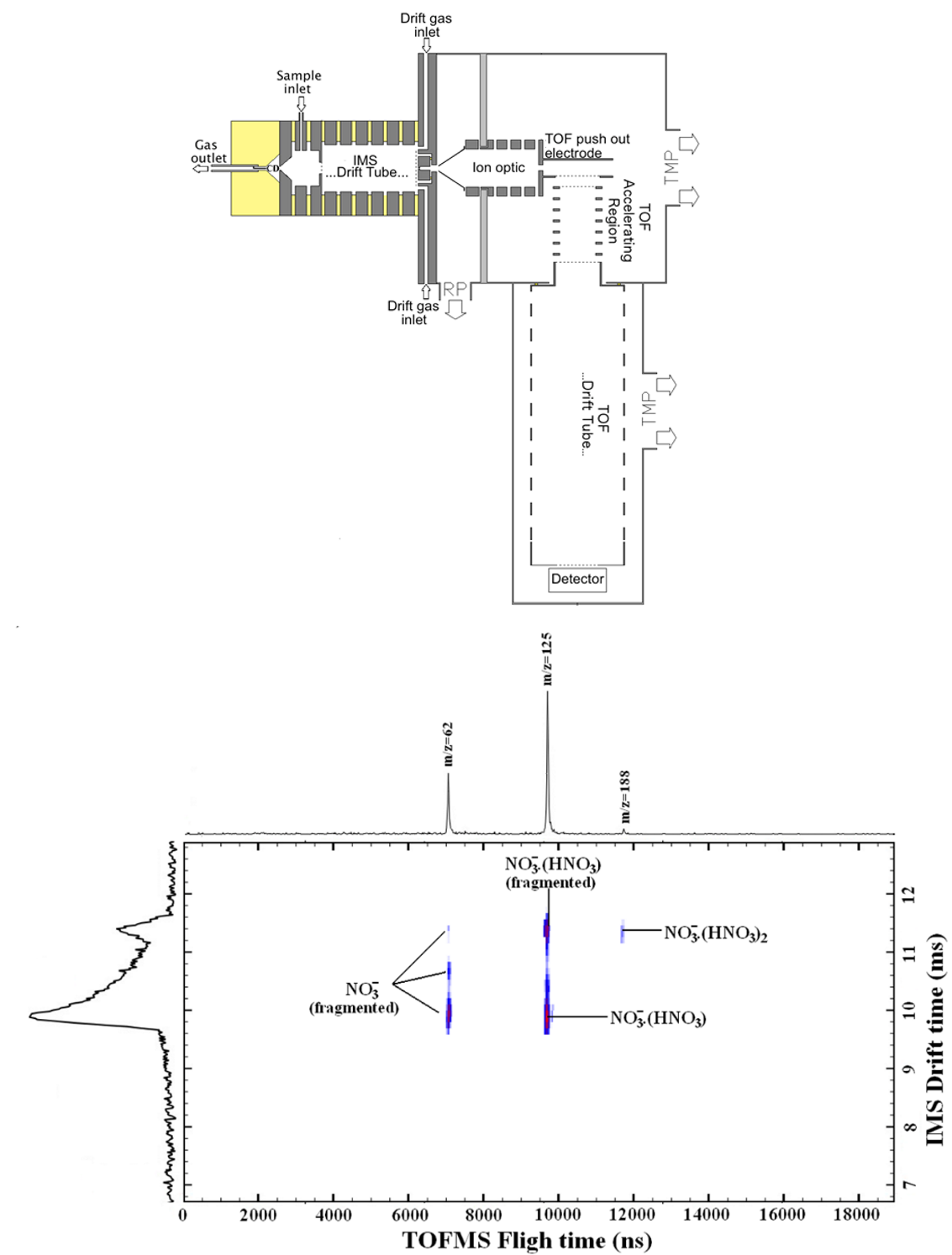Ion mobility spectrometry (IMS)
Ion Mobility Spectrometry (IMS) was first time introduced as a good trace analytical technique in the 70s of the 20th century, it has been widely used all over the world. The reasons were: compact design, high sensitivity, variability in application, quick response and either low investment or operation costs. Taking these advantages IMS has been applied in many fields including monitoring of environmental pollutants, biomolecules, drugs and explosives detection. IMS spectrometer detects ionised fragments of the investigated samples from their mobility in electric field.
The experimental setup is based on ionisation of samples by reactant ions generated in corona discharge (CD), and measuring the time between the ionization and detection of ionised samples in drift tube Fig.1. The different detection time should be associated do different mobility of ions. The CD source could be used for negative and positive ion generation. After the ionised samples reach the detector, high intensity peaks on time scale can be seen in spectra in Fig.1.

Fig. 1. Ion mobility spectrometer with corona ion source and IMS spectra before (black line) and after (red line) sample treating.
Ion Mobility Spectroscopy- Mass Spectroscopy (IMS-MS):
In the IMS-MS setup principles of Ion Mobility Spectrometry are the same as mentioned above. The ions that passed through the pinhole of the IMS collector are guided by the ion optic, to the chamber of linear time-of-flight mass spectrometer. The ions shuttered from this region are uniformly accelerated to the drift tube of a TOF spectrometer. Multichannel plate (MCP) was used as a detector. The signal from the detector was processed by a preamplifier and collected by a multiscaler PCI card.
The IMS-TOF instrument can operate in three modes:
-
- “Single IMS” mode,
- “Single TOF” mode when ions from IMS are constantly passing to the TOF region,
- Two dimensional “2D mode” when the IMS and TOF spectrometers are operated synchronically.

Fig. 3. Schematic view of IMS-TOF instrument and an example of 2D spectrum when the IMS and TOF spectrometers are operated synchronically. Above upper and left axis, mass spectrum and IMS spectrum are shown respectively.
Examples for measured compounds: Phthalates (DMIP, DMP, DMTP, BBP), Explosives (PET-n, RDX, TNT), TCA, TBA …
Contact:
RNDr. Ladislav Moravský, PhD.
Email: ladislav.moravsky(at)fmph.uniba.sk
Dr. Vahideh Ilbeigi
Email: Vahideh.Ilbeigi(at)fmph.uniba.sk
Prof. Dr. Štefan Matejčík, DrSc.
Email: matejcik(at)fmph.uniba.sk